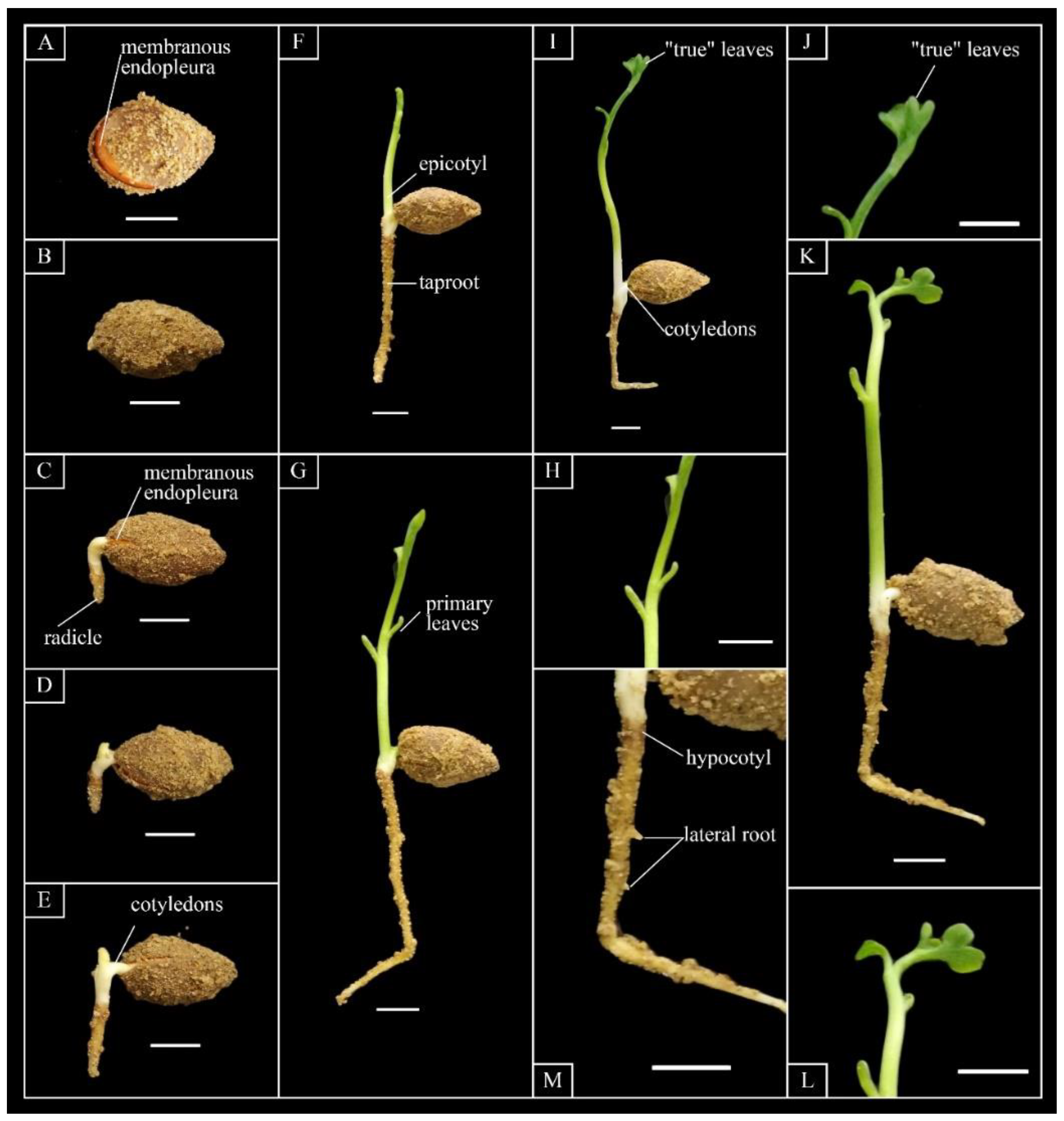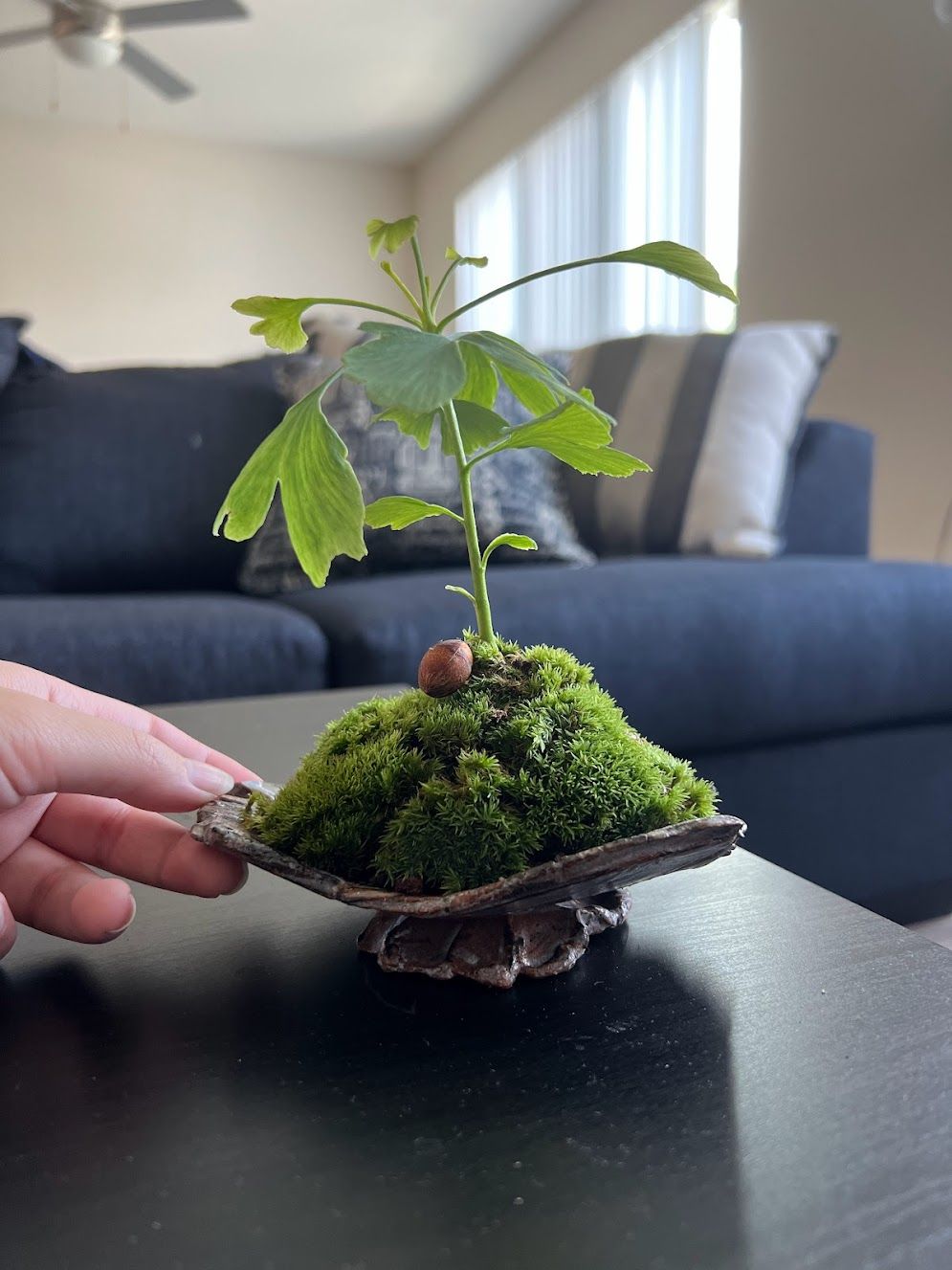If you’ve ever wanted to grow your own ginkgo tree from seed, you’re in the right place. Germinating ginkgo seeds may seem tricky at first, but with the right steps, you can watch your tiny seed transform into a healthy sapling.
Imagine the satisfaction of nurturing your very own tree, a living piece of history that has survived for millions of years. In this guide, you’ll discover simple, proven techniques to crack the seed’s tough shell and encourage growth. Keep reading, and you’ll soon be on your way to growing a beautiful ginkgo tree right at home.
Choosing Quality Ginkgo Seeds
Choosing quality ginkgo seeds is the first step for successful germination. Healthy seeds increase the chance of growth and strong seedlings. Selecting good seeds saves time and effort in the long run.
Identifying Mature Seeds
Mature ginkgo seeds have a firm texture and a yellow-green color. They are usually the size of a small olive. Avoid seeds that look too soft or are very pale. These seeds may not sprout well.
Check the seed’s outer shell. It should be smooth and intact. Mature seeds have a slight smell, but it should not be strong or rotten. Seeds that feel heavy for their size usually have good inside material.
Avoiding Damaged Seeds
Damaged seeds often have cracks or holes on the shell. These seeds are weak and prone to mold. Avoid seeds with dark spots or a shriveled appearance. Such damage lowers the chances of germination.
Also, avoid seeds with a bad odor. This may mean the seed is rotten inside. Handle seeds gently to prevent breaking the shell. Choose seeds that look fresh and clean for the best results.

Credit: www.youtube.com
Preparing Seeds For Germination
Preparing Ginkgo seeds for germination is the first step to growing healthy trees. Proper preparation improves the chance that seeds will sprout strong. Ginkgo seeds have a hard outer shell that needs care before planting. This section explains how to clean, soak, and cold stratify seeds for best results.
Cleaning And Soaking
Remove the fleshy outer layer of the Ginkgo seed carefully. This layer can cause bad smells and attract pests. Use gloves or wash seeds in water to clean off the pulp. After cleaning, soak the seeds in warm water for 24 to 48 hours. Change the water daily to keep it fresh. Soaking softens the seed shell and starts the germination process.
Cold Stratification Process
Ginkgo seeds need a cold period to break dormancy. This process is called cold stratification. Place soaked seeds in a damp paper towel or moist sand. Put them in a plastic bag or container. Store the seeds in a refrigerator at 34 to 41°F (1 to 5°C). Keep them cold for 6 to 12 weeks. Check seeds regularly to avoid mold. Cold stratification helps seeds sprout faster once planted.
Selecting The Right Planting Medium
Choosing the right planting medium is key to germinating ginkgo seeds successfully. The medium must hold moisture but also drain well. It should support seed growth without causing rot or mold. The right balance helps seeds sprout strong roots and shoots.
Different soil types and containers can affect seed development. Proper soil and containers give seeds a healthy start. This section explains what soil works best and how to use trays or pots.
Soil Types Suitable For Ginkgo
Ginkgo seeds grow best in light, well-draining soil. Sandy loam or a mix of peat and perlite works well. These types keep soil moist without waterlogging. Avoid heavy clay soils that hold too much water. Such soil can cause seeds to rot.
The soil should be loose and crumbly. This allows air to reach the roots. Adding some organic compost improves nutrients. It also helps retain moisture evenly. Aim for slightly acidic to neutral pH around 6.0 to 7.0.
Using Seedling Trays Or Pots
Seedling trays and pots help control the growing environment. Use containers with drainage holes to prevent water buildup. Shallow trays allow easy monitoring of moisture. Small pots give each seed enough space to grow roots.
Fill trays or pots with the chosen soil mix. Firm soil gently without packing it too tight. Plant one seed per cell or pot. Label each container to track progress. Keep the medium evenly moist until seeds sprout. Proper containers help protect seeds from pests and diseases.

Credit: www.mdpi.com
Planting Ginkgo Seeds
Planting ginkgo seeds is an important step to grow a healthy tree. Proper planting helps seeds sprout quickly and develop strong roots. Choosing the right depth and spacing ensures good air flow and enough room for growth. Careful watering supports seed germination without causing damage.
Optimal Depth And Spacing
Plant ginkgo seeds about 1 inch deep in the soil. Too deep planting can stop seeds from sprouting. Keep space between seeds at least 6 inches. This distance allows seedlings to grow without crowding. Good spacing reduces competition for water and nutrients. It also helps prevent mold and root problems.
Watering Guidelines
Water the seeds gently after planting. Keep the soil moist but not soaked. Overwatering can cause seeds to rot. Check soil moisture every day in warm weather. Use a spray bottle or light watering can for best results. Once seedlings appear, water them less often but deeply.
Creating Ideal Germination Conditions
Creating the right environment helps ginkgo seeds start growing strong. Seeds need care and specific conditions to sprout well. Setting up these conditions carefully gives young plants the best chance to grow healthy.
Focus on temperature, light, and moisture. Each plays a vital role in the germination process. Balance these factors to mimic nature’s support for seed growth.
Temperature And Light Requirements
Ginkgo seeds prefer warmth to begin germination. Keep the temperature around 68 to 77 degrees Fahrenheit. This range helps the seed break dormancy and start sprouting.
Light is less important at the start. Seeds can germinate in dim or indirect light. Avoid direct sunlight, which can dry out seeds quickly. Once sprouts appear, give them more light to encourage growth.
Maintaining Moisture Levels
Seeds need consistent moisture but not soaking wet conditions. Keep the soil damp like a wrung-out sponge. Too much water can cause seeds to rot.
Covering seeds with a plastic wrap or a dome keeps moisture steady. Check daily to ensure soil stays moist. Proper moisture helps soften the seed coat and supports root development.

Credit: www.eniki.studio
Monitoring Seedling Growth
Monitoring seedling growth is key to growing healthy ginkgo trees. Watch the young plants every day. Small changes tell a big story about their health and progress.
Early care helps seedlings grow strong roots and leaves. Check soil moisture and light often. Spot problems before they become serious.
Recognizing Germination Signs
Look for the first sprout breaking through the seed shell. It usually appears within two to four weeks. The sprout is small and pale at first.
Next, tiny green leaves will start to grow. They show the seedling is getting energy from sunlight. Healthy leaves are firm and bright green.
Roots may also grow longer and thicker. Roots anchor the plant and absorb water. Watch for white, healthy root tips.
Managing Common Issues
Yellow leaves often mean too much water or not enough light. Adjust watering and move the seedling to a brighter spot. Brown leaf edges can mean dry air or poor soil.
Check for mold or fungus on soil surface. Mold appears as white or gray fuzzy spots. Remove affected soil and improve air circulation.
Seedlings may stop growing if soil is too cold or dry. Keep soil warm and moist but not soggy. Use a spray bottle to water gently.
Transplanting And Long-term Care
Transplanting and long-term care are key steps after germinating ginkgo seeds. These steps help young ginkgo trees grow strong and healthy. Proper care ensures the tree adapts well to its new environment. It also prevents damage and supports steady growth over the years.
When To Transplant
Transplant ginkgo seedlings after they grow 4 to 6 inches tall. The seedlings should have several true leaves. Choose a time in early spring or fall for transplanting. Avoid hot summer days to reduce stress on the plant. Handle the roots carefully to avoid breaking them. Plant in well-drained soil with good sunlight exposure. Space the seedlings at least 10 feet apart to allow room for growth.
Ongoing Care Tips For Healthy Growth
Water the young ginkgo regularly, keeping the soil moist but not soaked. Use mulch around the base to keep moisture and control weeds. Fertilize lightly in spring with balanced, slow-release fertilizer. Prune dead or damaged branches to promote healthy shape. Watch for pests like aphids and treat them promptly. Protect the tree from strong winds during its early years. Regular care helps your ginkgo tree thrive and live for many years.
Frequently Asked Questions
How Long Does It Take To Germinate Ginkgo Seeds?
Ginkgo seeds usually take 4 to 6 weeks to germinate. Proper cold stratification before planting speeds up germination. Keep the soil moist and warm during this period for best results.
What Is The Best Method To Germinate Ginkgo Seeds?
The best method is cold stratification. Soak seeds in water for 48 hours, then refrigerate in moist sand for 2-3 months. After stratification, plant seeds in well-draining soil and maintain consistent moisture.
Can Ginkgo Seeds Germinate Without Cold Stratification?
Ginkgo seeds rarely germinate well without cold stratification. This natural chilling breaks seed dormancy. Without it, germination rates are low and uneven, leading to poor seedling growth.
How Do I Care For Ginkgo Seedlings After Germination?
Keep seedlings in bright, indirect light and consistently moist soil. Avoid overwatering to prevent root rot. Gradually introduce them to outdoor conditions before transplanting.
Conclusion
Germinating ginkgo seeds takes patience and simple steps. Keep the seeds moist and warm for best results. Watch for small sprouts to appear after a few weeks. Avoid rushing the process; nature needs time. Growing ginkgo trees can be rewarding and fun.
Follow the steps carefully, and you will succeed. Start your planting journey today and enjoy watching life grow.

